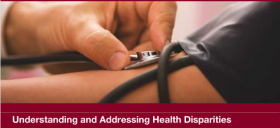
Understanding and Addressing Health Care Disparities
Many racial and ethnic minority groups experience disparities in health care quality and outcomes, including excess disease burden, complications and premature death for a variety of illnesses. Though these disparities are widespread and well-documented, there has been little progress in reducing them. Research has shown that even when physicians are aware that disparities exist generally, they are frequently unaware that those disparities exist in their own organizations or even in their own patient panels. Furthermore, health care professionals may not be familiar with recent developments in strategies to reduce disparities. Thus, this activity presents evidence-based best practices and practical strategies to reduce disparities in health care quality.
Medium: Audio/Video; E-Learning
Target Audience
This activity has been designed for primary care physicians, medical directors, and quality improvement directors.
Learning Objectives
After completing this activity, the participant will demonstrate the ability to:
- Recognize the current state of health disparities in the United States;
- Identify the most common sources of government statistics on health care quality and disparities;
- Interpret the current consensus reports on the state of health disparities and identify health care disparities as a specific form of low-quality care;
- Describe the process for planning, designing, and implementing quality-improvement activities that aim to reduce disparities;
- Summarize the importance of integrating disparities-reduction into routine quality-improvement.
Course Chair
Marshall H. Chin, MD, MPH
Faculty
Kevin McCullough, MJ
Rachel H. DeMeester, MPH
Theresa Salas, MPP
Scott Cook, PhD
The University of Chicago Pritzker School of Medicine is accredited by the Accreditation Council for Continuing Medical Education to provide continuing medical education for physicians.
Credit Designation Statement
The University of Chicago Pritzker School of Medicine designates this enduring material for a maximum .75 AMA PRA Category 1 Credits™. Physicians should claim only the credit commensurate with the extent of their participation in the activity.
Nurses and other healthcare professionals will receive a Certificate of Participation. For information on the applicability and acceptance of certificates of participation for educational activities certified for AMA PRA Category 1 Credit™ from organizations accredited by the ACCME, please consult your professional licensing board.
To view this activity, you will need to visit the QuantiaMD website at:

 Facebook
Facebook X
X LinkedIn
LinkedIn Forward
Forward